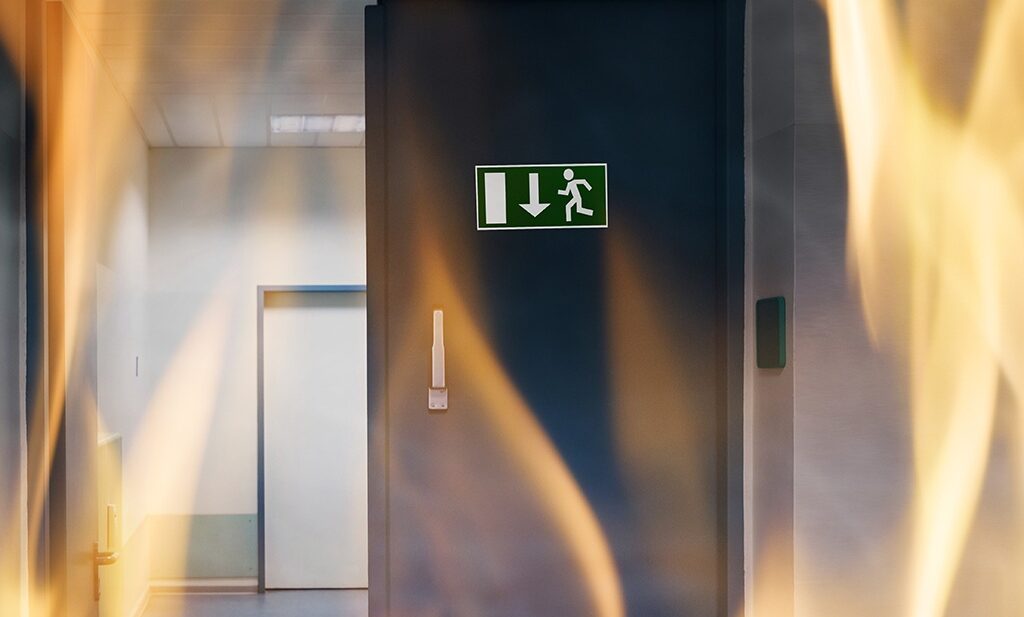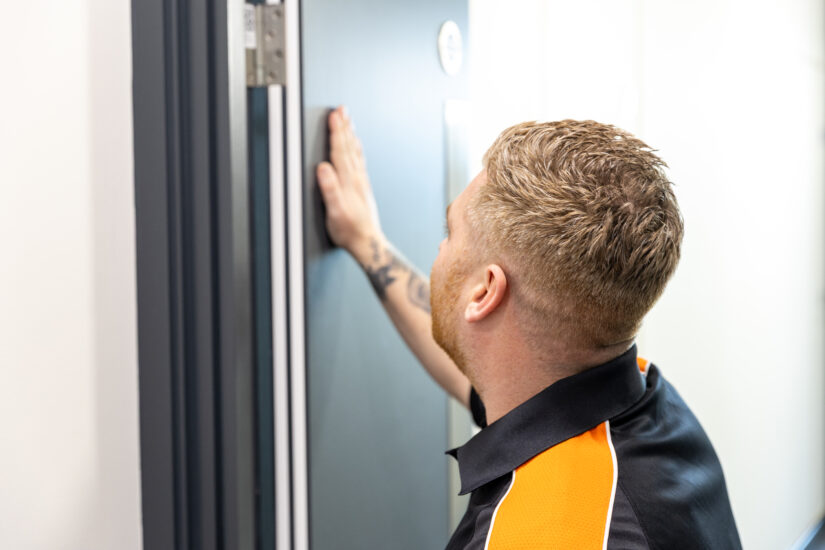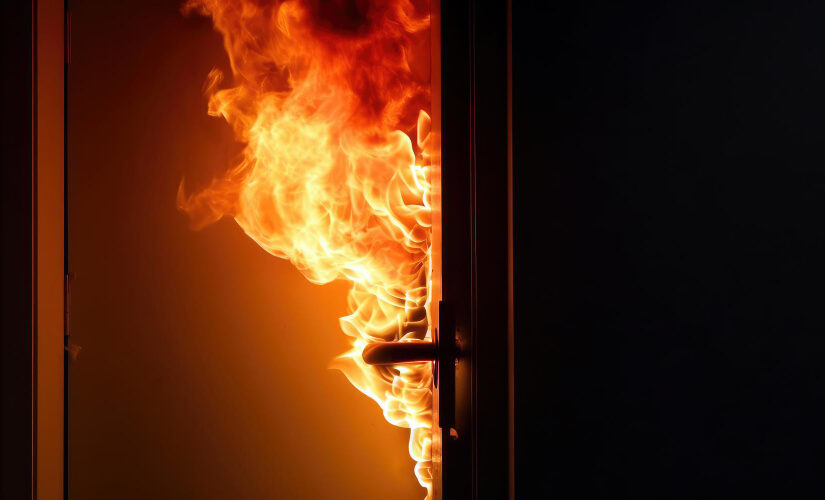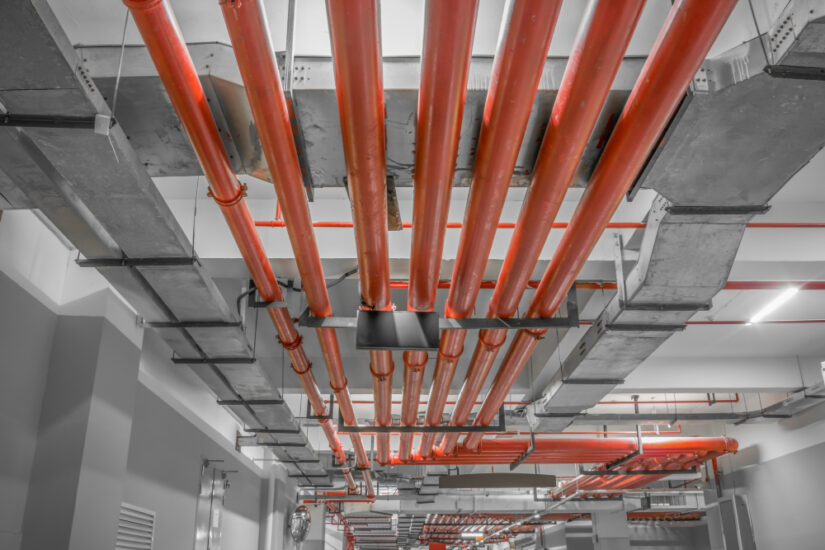Introduction
Fire safety has become one of the most scrutinised aspects of property management in the UK, particularly in the wake of the Grenfell tragedy and the evolving regulatory landscape. For property professionals and operators, ensuring compliance is both a legal obligation and a fundamental element of responsible estate management.
Among the many elements of fire safety, fire doors play a critical and often underestimated role. Behind every compliant fire door lies the first line of defence against smoke, flames, and potential catastrophe. Yet despite their importance, compliance failures remain alarmingly common. In 2021, 75% of fire doors inspected failed to meet required safety standards — a statistic that underscores the scale of the challenge.
In this guide, Global Facilities breaks down the current regulatory environment, common pitfalls, and best practices to help property professionals meet their fire safety obligations with confidence.
The Regulatory Landscape: What Operators Need to Know
Fire door compliance in the UK is governed by a combination of legislation and regulatory standards:
- Regulatory Reform (Fire Safety) Order 2005
This foundational piece of legislation places legal responsibility for fire safety — including the condition and maintenance of fire doors — on the “responsible person” (usually the property owner, operator, or managing agent). - Fire Safety (England) Regulations 2022
Introduced in response to post-Grenfell recommendations, these regulations mandate annual inspections of flat entrance fire doors and quarterly checks of communal fire doors in all buildings over 11 metres in height. These checks must be documented and carried out by competent persons. - Building Regulations: Approved Document B
This sets out where fire doors are required, typically FD30S-rated doors for bedrooms and kitchens in student housing and similar accommodation settings. It also governs aspects like fire resistance, self-closing devices, and smoke seals. - BS EN Standards
All fire doors and associated hardware must meet the relevant British and European standards to ensure performance under fire conditions.
The regulatory environment is evolving quickly, with increasing emphasis on accountability, digital record-keeping, and third-party certification.
Common Compliance Challenges in Student Accommodation
For student accommodation operators, compliance is made more complex by high occupancy, rapid tenant turnover, and patterns of behaviour that can undermine safety, such as propping open fire doors. Some of the most frequent compliance failures include:
- Poor installation – doors that don’t fit frames properly, leaving oversized gaps
- Lack of maintenance – worn hinges, broken closers, and damaged seals that prevent doors from closing effectively
- Non-certified doors or components – using products that lack appropriate third-party certification
- Behavioural issues – residents wedging doors open, bypassing their intended function
These risks are compounded in older stock buildings, where retrofitting can be complex. While some existing doors can be upgraded, replacing them with certified fire door sets is often the most reliable and cost-effective option for long-term compliance.
Fire Door Inspections: A Legal and Operational Imperative
Regular inspection is not only a regulatory requirement but a cornerstone of effective fire safety management.
Under the Fire Safety (England) Regulations 2022, operators must ensure:
- Annual inspections of all flat entrance doors
- Quarterly inspections of communal fire doors
- Immediate action if defects are identified, with all works completed by competent and accredited contractors
Increasingly, authorities expect operators to maintain digital records of inspections, maintenance, and remedial work. This creates clear accountability trails and ensures transparency during audits or incidents.
Emerging Best Practices and Innovations
The fire safety sector is embracing a range of technological and procedural innovations that are raising the bar for compliance:
- Digital monitoring systems – sensors that alert facilities teams if fire doors are left open or fail to close
- QR code tagging and cloud-based records – enabling real-time inspection data and easier audits
- Improved door hardware and materials – lighter composite doors, enhanced closers, and fire-rated glazing that combine compliance with modern aesthetics
- Preventive maintenance regimes – replacing seals, hinges, and closers on planned cycles rather than after failure
For large property portfolios, these approaches offer operational efficiency, risk reduction, and improved evidential compliance.
Looking Ahead: Regulatory Trends
Over the next five years, fire door compliance is expected to become even more stringent. Anticipated trends include:
- Mandatory third-party certification of fire doors and installation
- Wider adoption of digital inspection records and smart monitoring technology
- Tighter enforcement by fire authorities, including penalties for poor record-keeping or non-compliance
- Greater alignment between UK risk-based regulation and the more prescriptive European models
The Role of Residents and Stakeholders
While property professionals carry the legal responsibility for fire door compliance, residents and building users also play a crucial role. Clear communication, induction briefings, and visible reminders can help ensure doors are not wedged open and defects are reported promptly. Creating a culture of safety is just as important as technical compliance.
Why Partner with Global Facilities
Global Facilities is a trusted partner to real estate operators, asset managers, and property professionals across the UK. With accredited expertise in fire safety, facilities management, repair, and refurbishment, we provide end-to-end compliance solutions — from risk assessments and inspections to installation and maintenance.
Our fire safety specialists work across multiple sectors, ensuring your properties meet both current regulations and emerging standards.
Take Proactive Steps Toward Compliance
Fire doors are not just another regulatory requirement — they are a critical safeguard against the spread of smoke and fire. In a tightening regulatory environment, taking a proactive, expert-led approach is essential.
To ensure your properties meet the latest UK fire door regulations and maintain the highest safety standards, contact us today.









